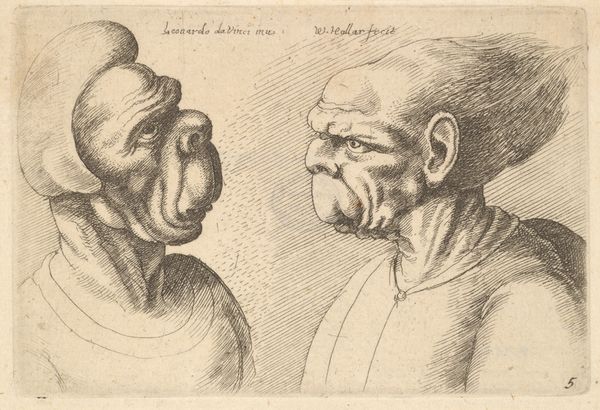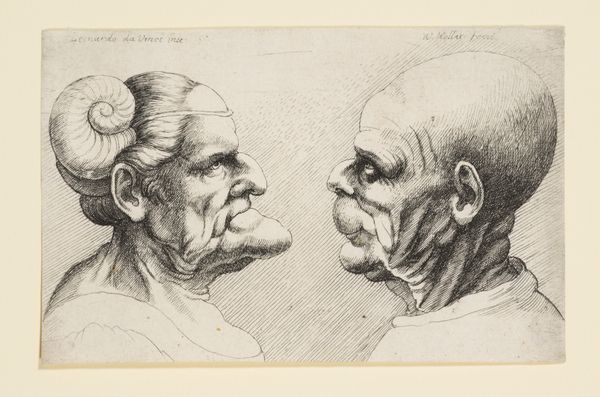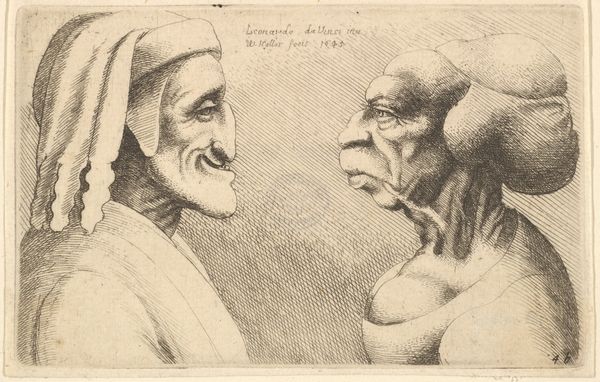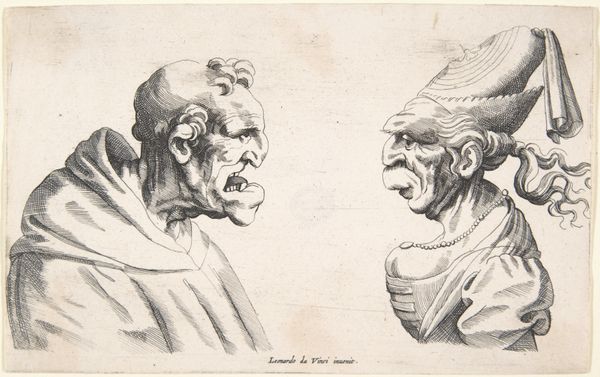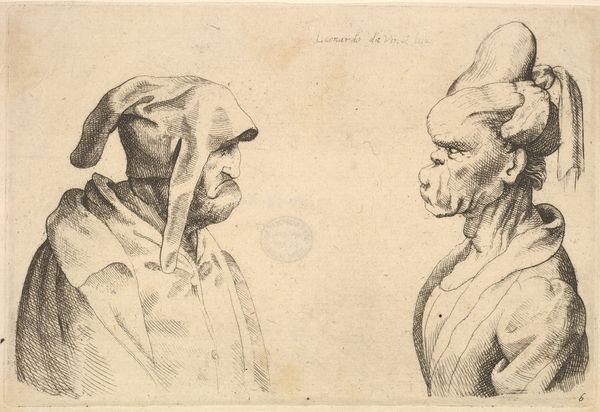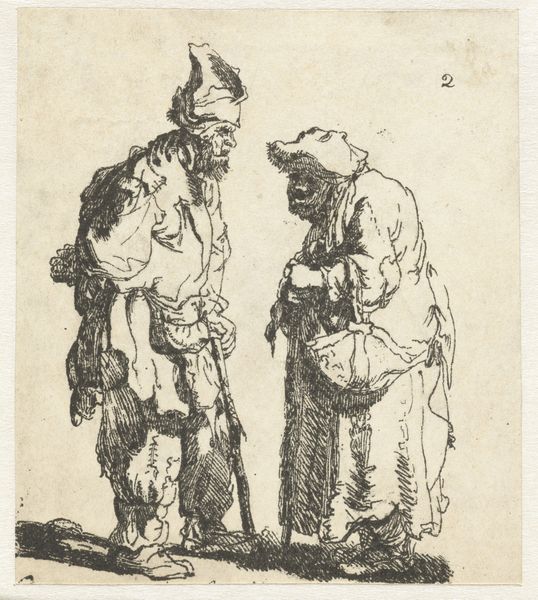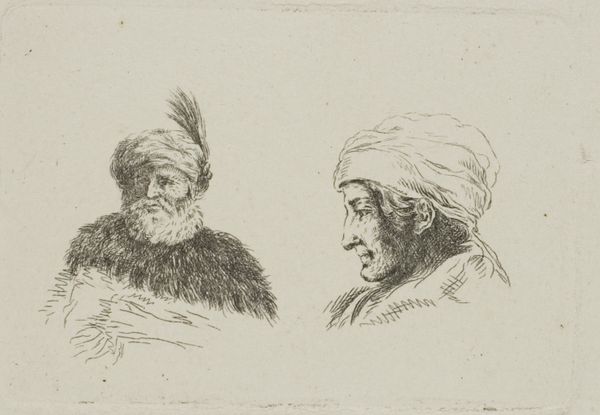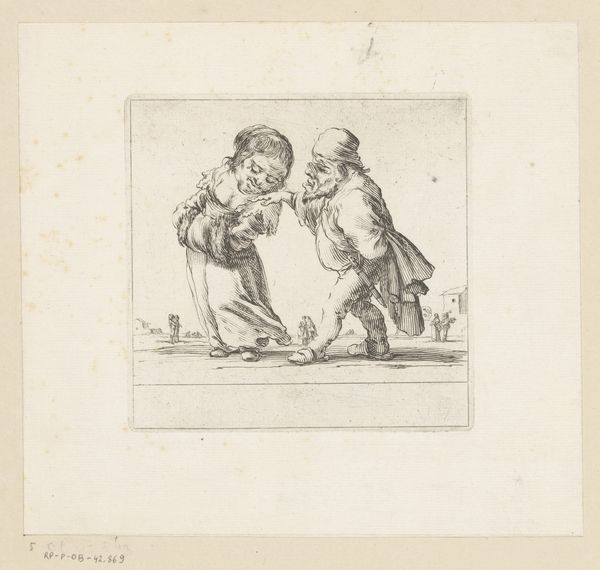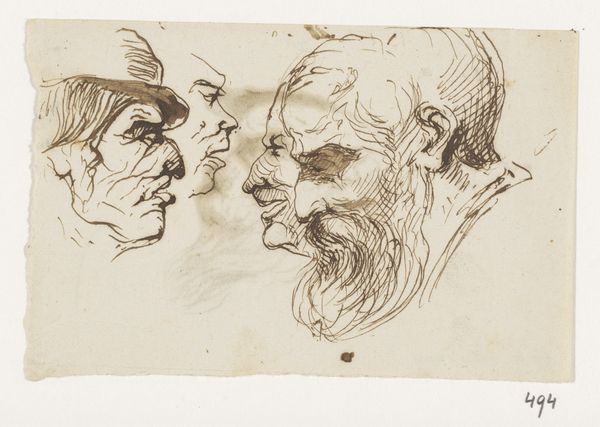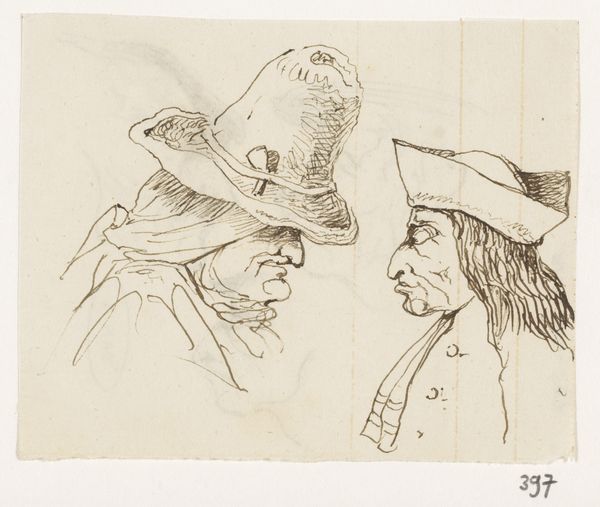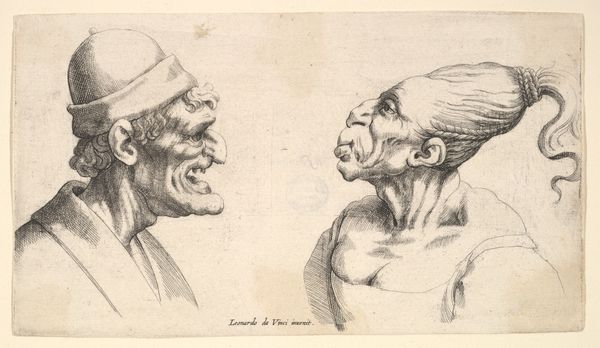
drawing, print
#
portrait
#
drawing
# print
#
mannerism
#
portrait drawing
Dimensions: Sheet: 3 3/8 × 4 7/8 in. (8.6 × 12.4 cm)
Copyright: Public Domain
Curator: Looking at this print, the initial impression is unsettling. The figures feel like distorted echoes of humanity, almost dreamlike in their bizarreness. Editor: This etching, "Two Deformed Heads with Very Long Upper Lips," was created around 1645 by Wenceslaus Hollar. It's currently part of the collection at the Metropolitan Museum of Art. Curator: Hollar has really emphasized line work, hasn't he? You can see every wrinkle, every contour…It exaggerates, making their features…alien. It reminds me a bit of those funhouse mirrors, distorting our perception, prompting me to question perceptions. Editor: Precisely. Hollar was quite the master of technique, you notice the density and delicacy of his hatching. Let’s consider the composition: two profiles, starkly contrasted yet formally balanced. One has more shading which contrasts strongly with the bare stark hatching of the opposing face. Semiotically speaking, this binary suggests more than mere physical deformity; it may explore moral or societal corruption. Curator: Corruption, interesting! I saw melancholy, almost as if these figures are burdened by the world's ugliness. Especially those drooping lips. It's a caricature, but one laced with sorrow, as if someone took the joy from their souls! I wonder what tales those faces would whisper, locked away. Editor: Their exaggerated physiognomy might refer to the mannerist tradition. One also can see the hand of Leonardo Da Vinci in their structure and form. Deformity, during the time the artwork was produced was not only considered with regards to how it impacted an individual, but often also referred to their class, education, morality and personality traits. I think one of the main things that stays with viewers is the power the work possessess to unsettle viewers even today. Curator: Absolutely. I mean, art should nudge us, prod at the comfortable corners of our minds, I think. And what's interesting with this piece is how accessible it remains even across centuries; those themes of sorrow and ugliness seem to reverberate still within us. Editor: Hollar’s technique makes these portraits not mere representations, but philosophical propositions in the language of form. And to do so well into his 40's indicates the mature genius on offer. A reminder that visual language is about more than the surface and its material properties, but a lens.
Comments
No comments
Be the first to comment and join the conversation on the ultimate creative platform.
